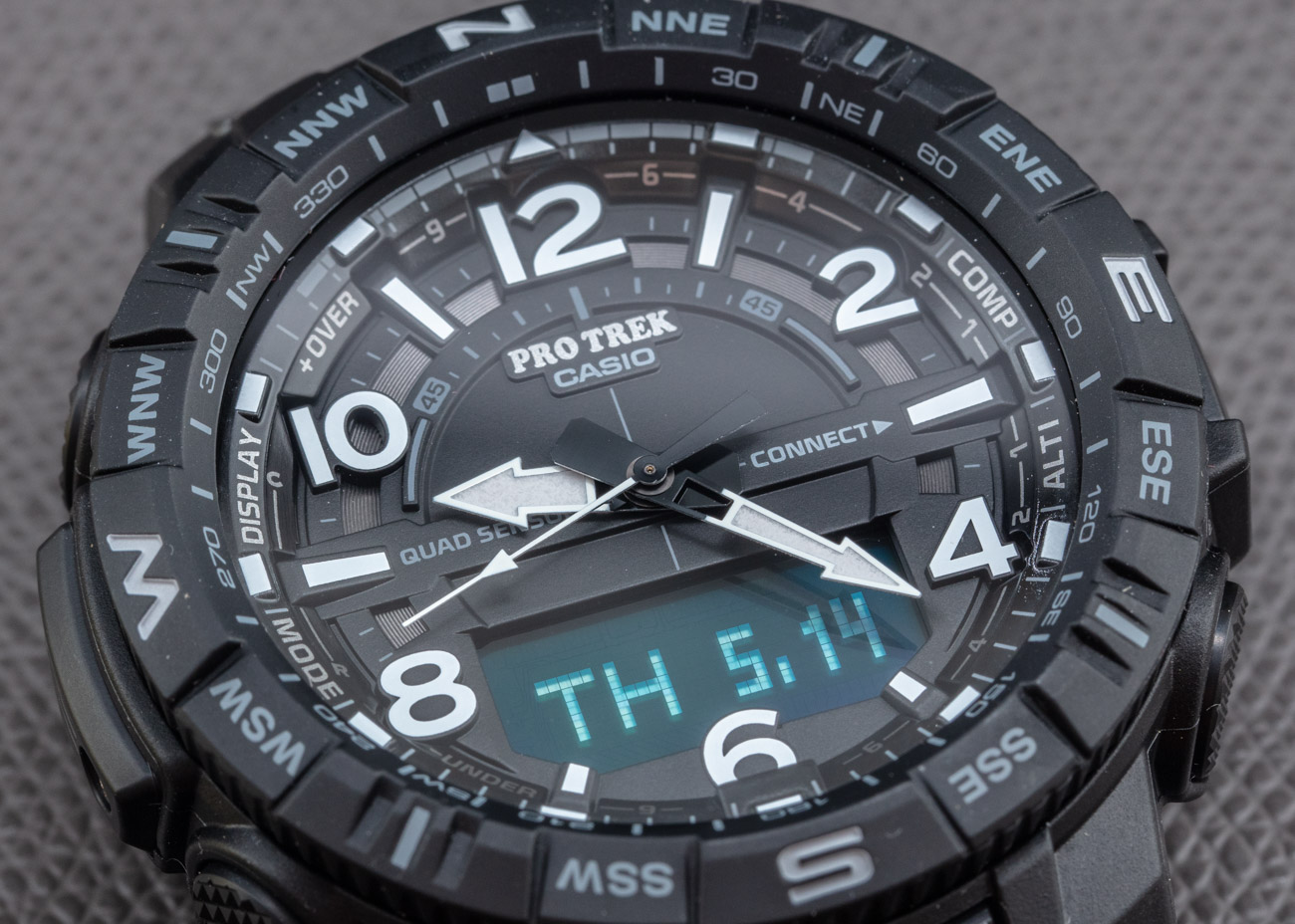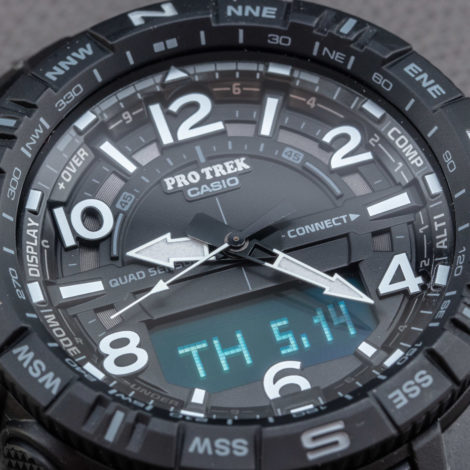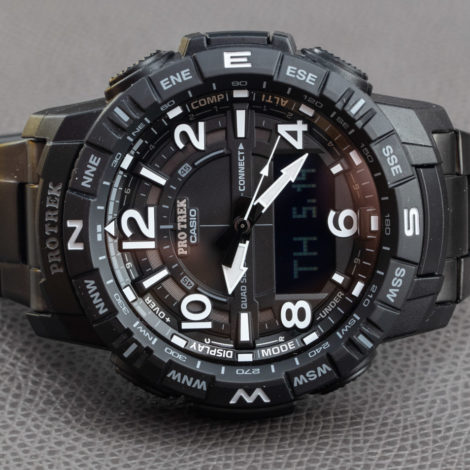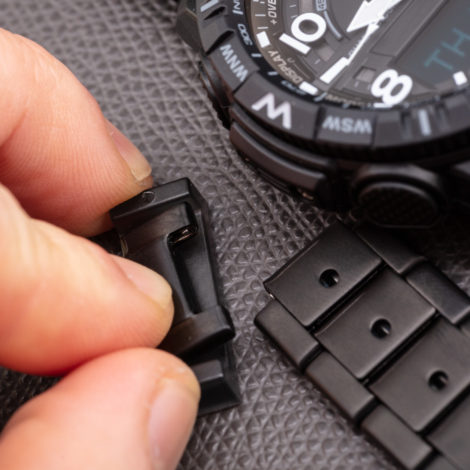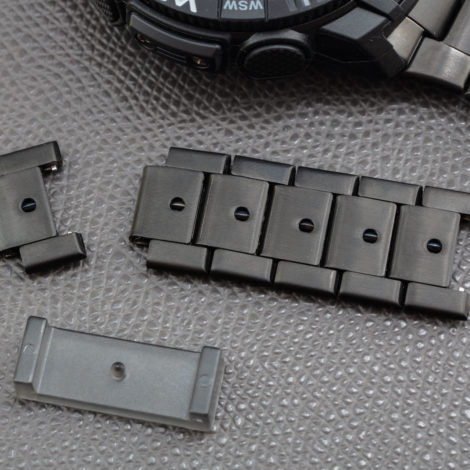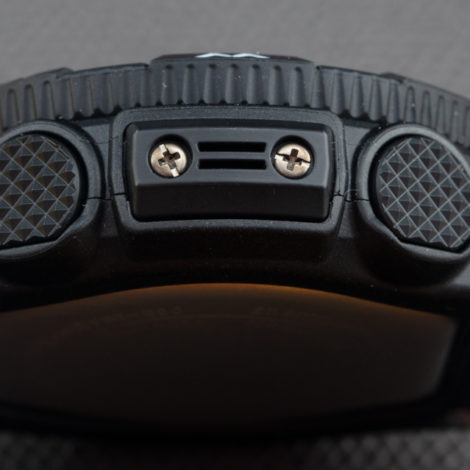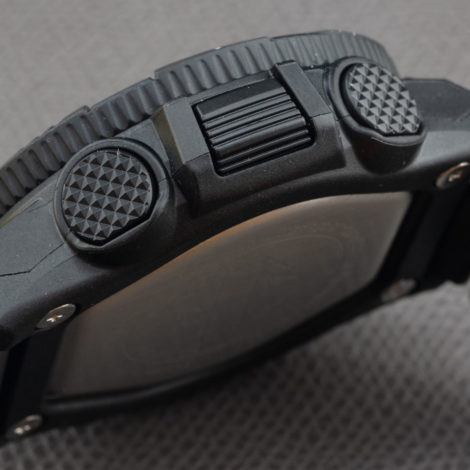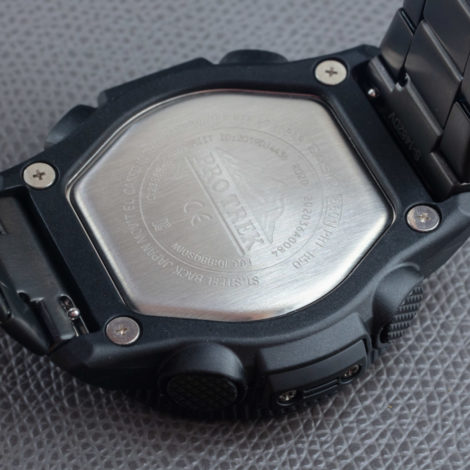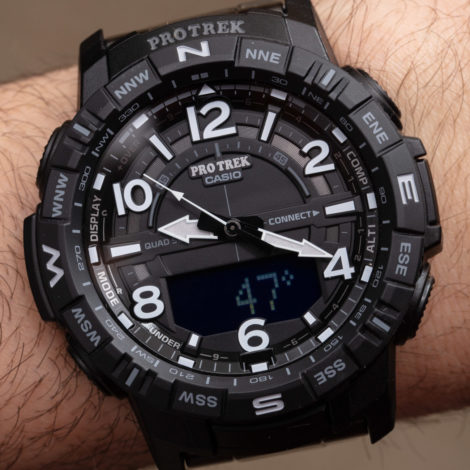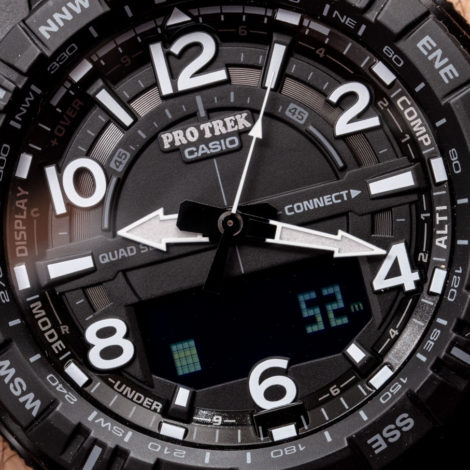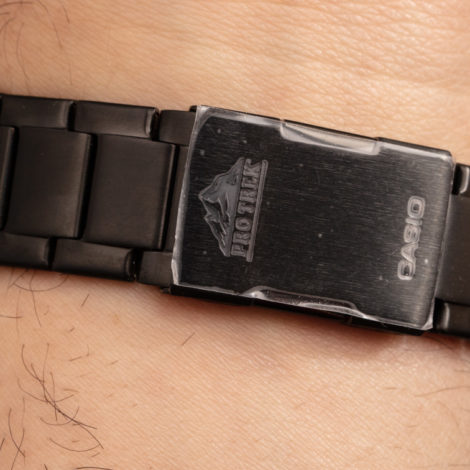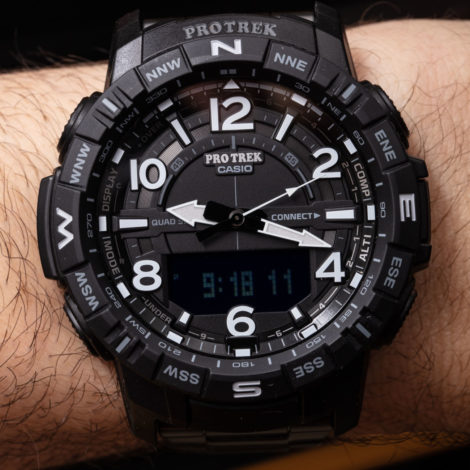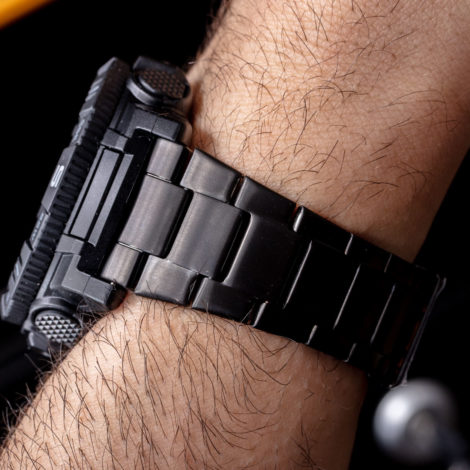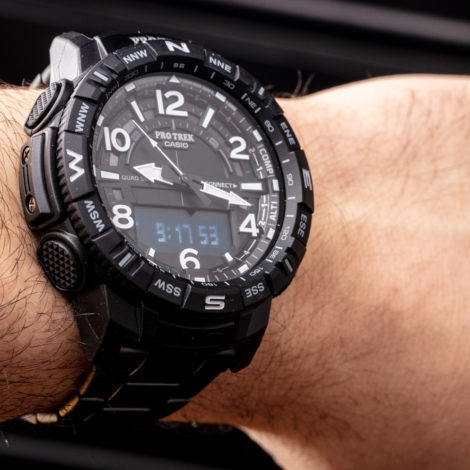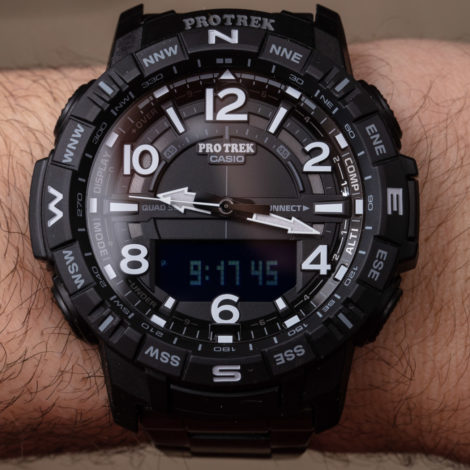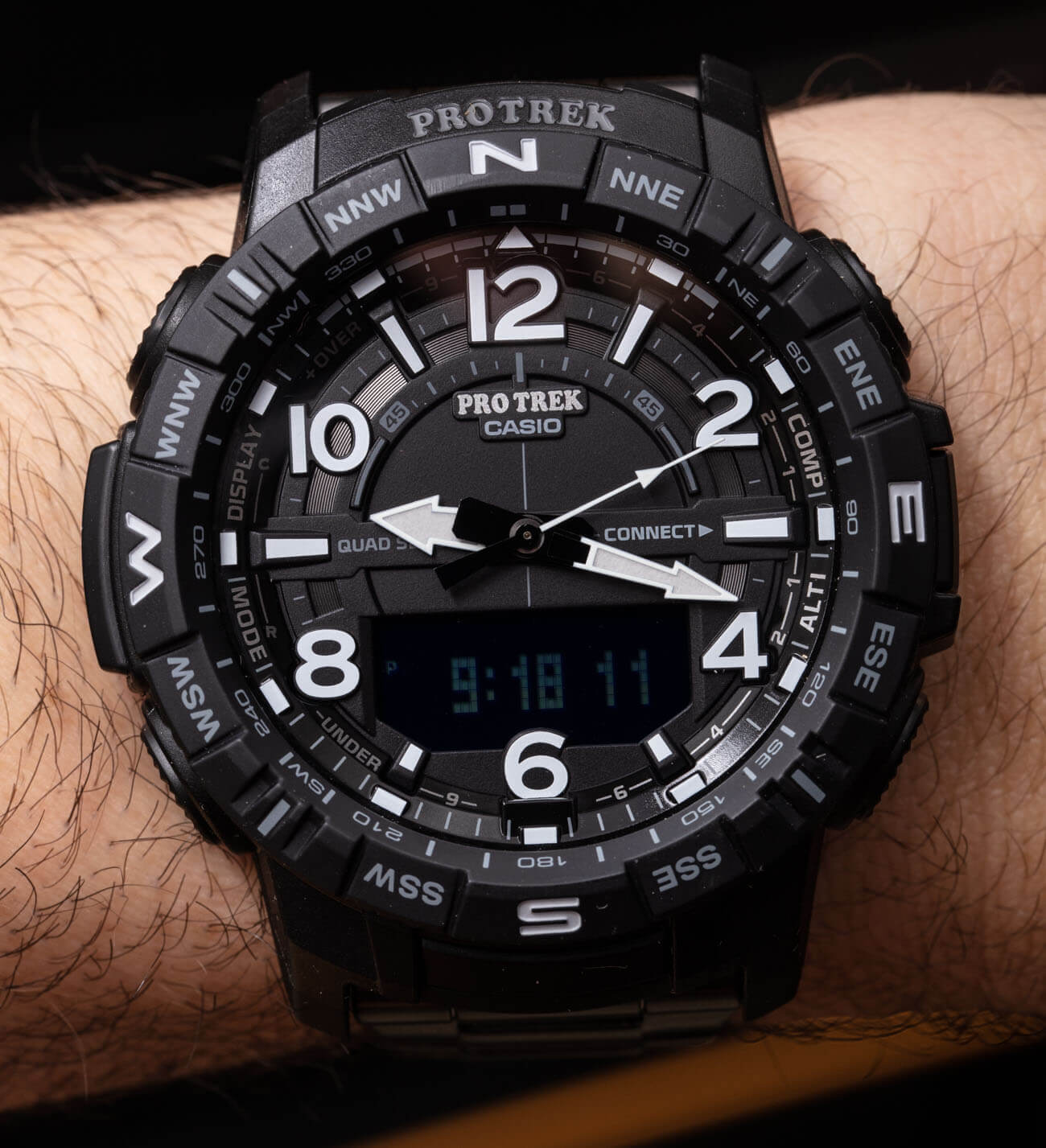
The longstanding Casio Pro Trek (formerly Pathfinder) watch family endures on as the Japanese brand’s famed “hiking” watch. Today, I check out the Casio Pro Trek PRT-B50, specifically the PRTB50YT-1 in black with a matching black titanium bracelet. Pro Trek’s territory even within Casio has been shrunk due to the encroachment of G-Shock models that in many ways overlap with Pro Trek models in both functionality and style. It was once only Pro Trek models that had “ABC” (altimeter, barometer, compass) sensor technology, as well as many of Casio’s hybrid analog/digital displays. This is no longer the case, as Casio has lent all of Pro Trek’s unique selling points over to the G-Shock family — so, let’s take a look at this admittedly good Casio Pro Trek model and understand how it compares and contrasts with its G-Shock “sister model,” the Casio G-Shock Mudmaster GG-B100 (aBlogtoWatch review here).
At the same time, Casio is currently selling both the Pro Trek PRT-B50 and the G-Shock Mudmaster GG-B100, which both share the same base “module” (the term Casio uses for its movements). More so, as configured, this Pro Trek PRT-B50 on the black titanium bracelet and the Mudmaster GG-B100 have the same retail price. Consumers will justifiably be a bit confused as to which model is right for them. To be fair, the base model Pro Trek-B50 comes in at a much less expensive $220 price point, whereas this version with the black IP-coated titanium bracelet costs more. In essence, the G-Shock Mudmaster is the more expensive model, and accordingly, the case is more durable and wear-resistant (though it is larger as a consequence).
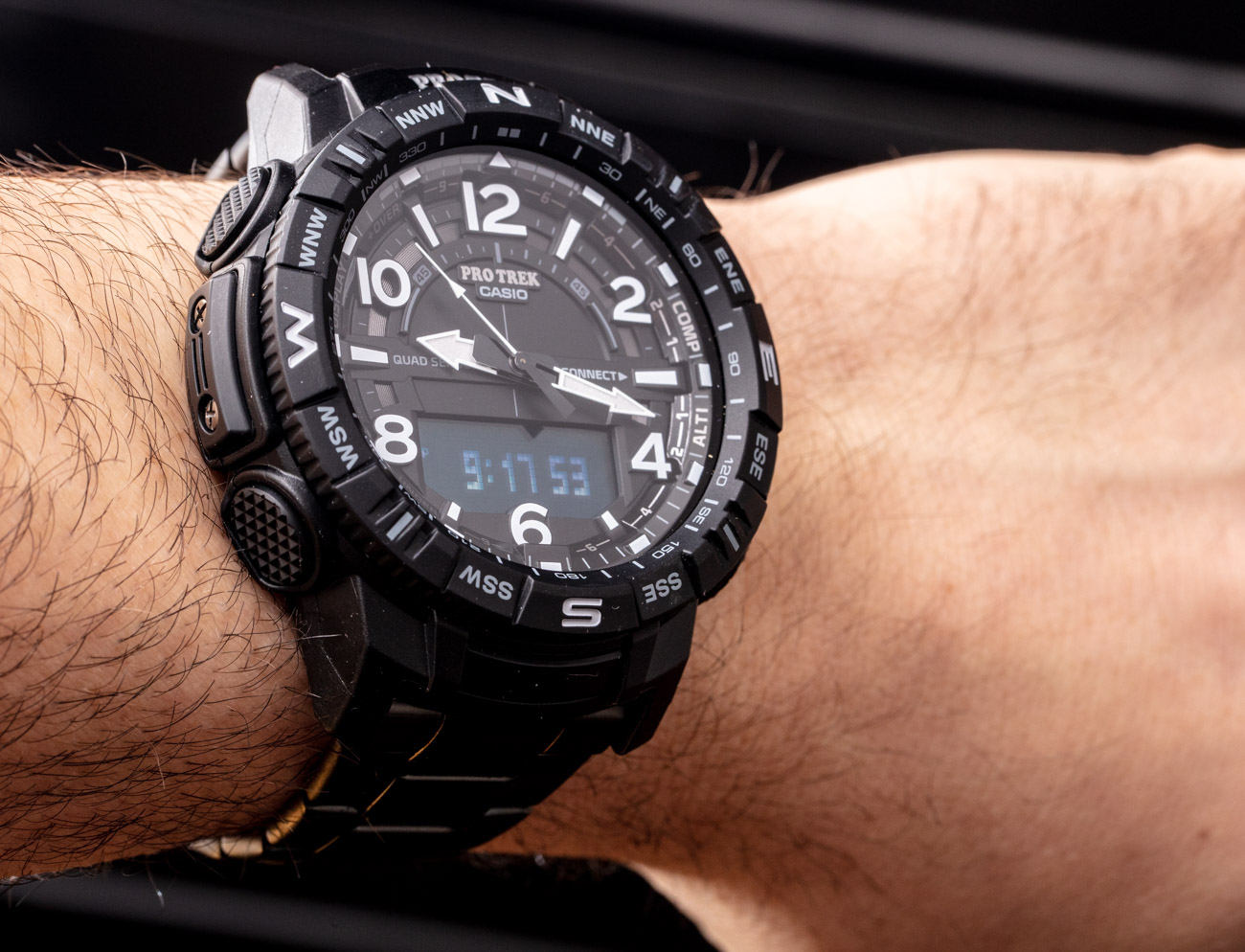
I dedicate much of the Pro Trek PRT-B50 video review to discussing how it compares to the Mudmaster GG-B100… and at the end of the case, unless you have a specialized need for a particular feature in one of the two watches, the choice is a matter of taste and style. Here is where the Pro Trek model beats the G-Shock. First of all, even at 50.8mm-wide and 15.8mm-thick, the Pro Trek is the smaller watch of the two in thickness. It also benefits from having a rotating navigational bezel — but, to be honest, that isn’t very useful (especially since the module has a compass function built into it).
The Pro Trek is also a lighter watch, which is amazingly apparent even on the titanium bracelet. In total, the watch weighs just 64 grams. On the wrist, you really don’t feel like anything is there. Finally, the Pro Trek PRT-B50 marginally beats out the G-Shock Mudmaster GG-B100 in terms of legibility, thanks to the dial’s high-contrasting and very easy-to-read hands and hour markers (both of which are painted in luminant). It is also true that if you want a G-Shock with a titanium bracelet, it is going to cost you a lot more money than the retail price of a PRTB50YT-1. Speaking of the bracelet, let me discuss it a bit since, for me, this is a new bracelet design and I think its clever engineering requires some discussion.
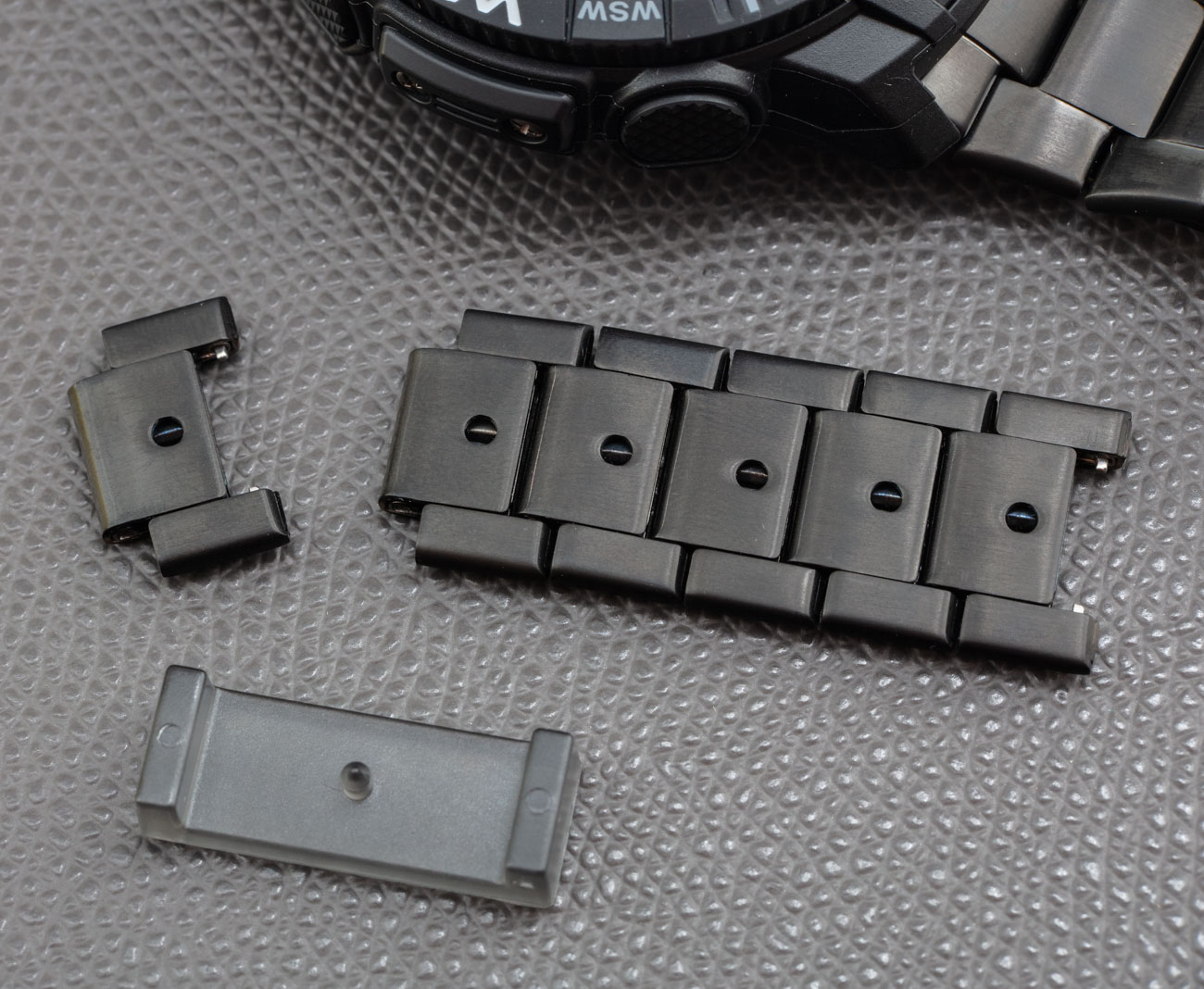
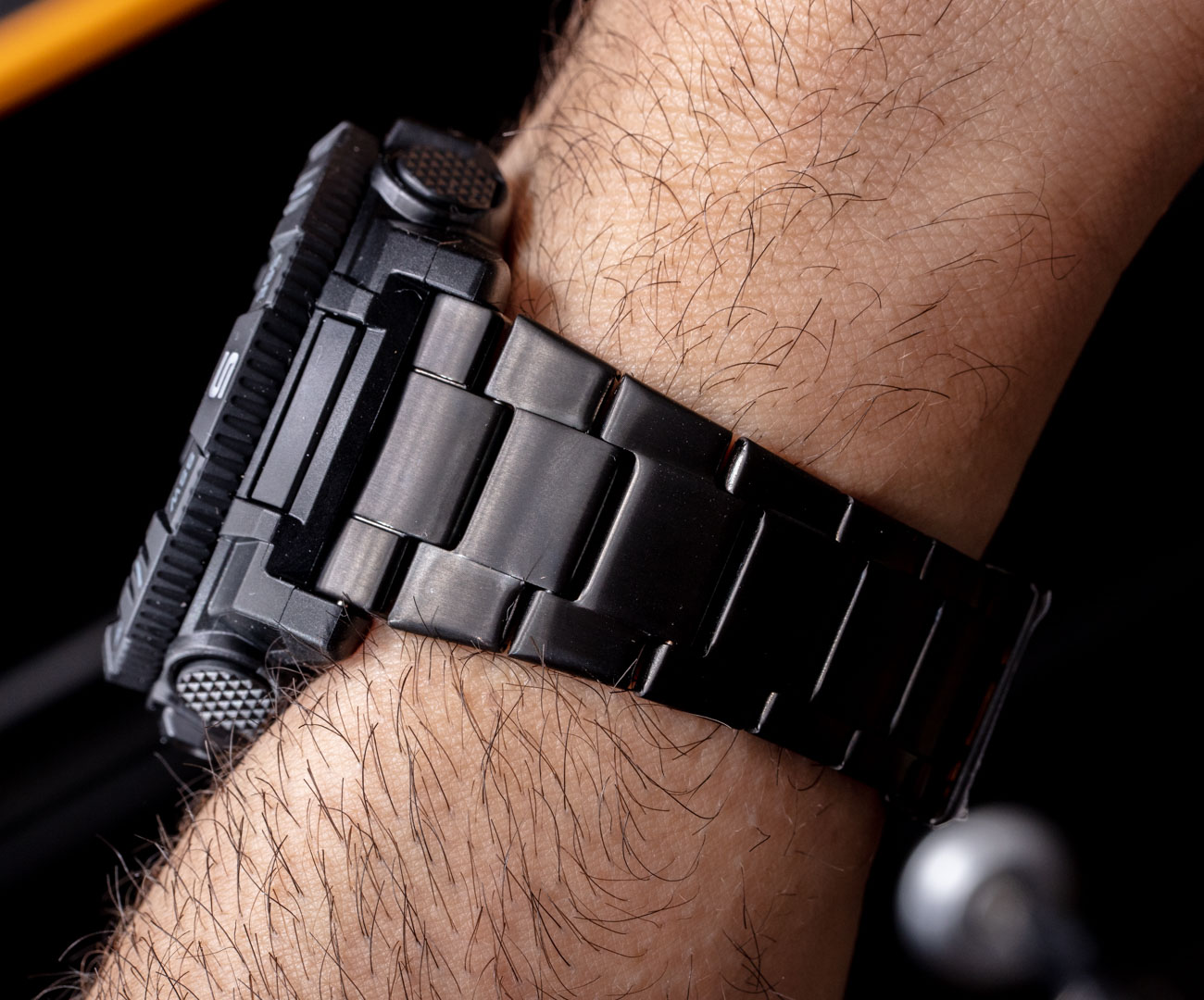
There are two downsides to the bracelet. First is that if you have smaller wrists, like mine, the way the bracelet connects to the case means that the case lugs sharply jut out a bit. This isn’t a deal-breaker by any means, but it is a point of inelegance that I believe Casio should have designed around a bit better. Second, the bracelet offers only a minor level of micro-adjustment (just one extra spring bar hole in deployant to help ideally size the watch). I’d say that the options for sizing the bracelet will work for most wrists, though, as a sports watch, this Pro Trek is meant to be worn snugly enough not to move around, but not so snug as to restrict your wrist’s movement.
Sizing the bracelet is the best part because Casio engineered a really clever system that does require a tool, but one that, if you don’t have it, something you have laying around could easily double to release the straps. I also believe that this new link design helps the bracelet be thinner while maintaining a high degree of structural integrity. No, this strap isn’t going to have G-Shock durability, but I believe it will satisfy the vast majority of uses. A small plastic tool supplier with the watch allows you to press down on a hidden pusher on the rear of the case. This, in turn, causes both hold pins in the link to retract and allow it to separate. If you know what you are doing, you can go from an entirely unsized bracelet to a sized one in under a minute. This is amazing given that most other bracelets require a special spring bar removal tool, steady hands, and some patience, as the entire exercise can take 15 minutes, or more, depending on how accurate your sizing predictions are. Also, note how relatively thin and discreet the fold-over deployant clasp is. I should also mention that, in addition to the bracelet having quick-release end links, the Pro-Trek case is designed to accept many after-market 24mm-wide straps. (G-Shock watches normally don’t have removable straps, and if you do need new straps, you can typically only use ones made for that particular case.)
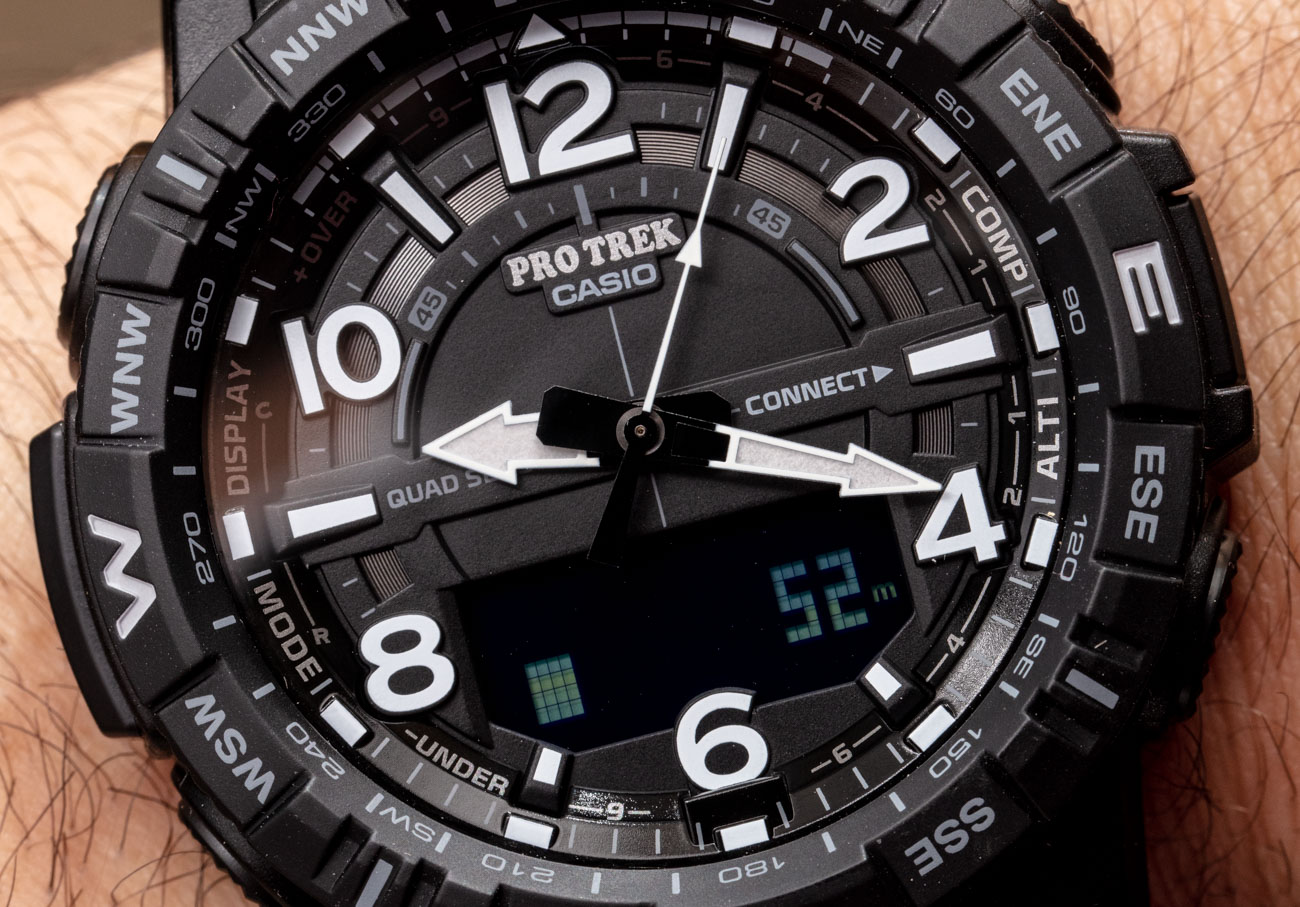
The rest of the Pro Trek PRT-B50 case is in matte black resin, which now partially extends over the caseback to offer what might be even more durability. Whereas the G-Shock has 200 meters of water resistance, the Pro Trek has 100 meters. The height of the rotating bezel is also designed to protect the crystal from unwanted shock. The case itself is attractive, but in a way that has always been intentionally more conservative than G-Shock. The now-larger G-Shock-style pushers are easy to press, but there are a lot of them on the case (six in total). Casio also failed to label the bottom center pusher on the front of the case that activates the backlight. The pusher almost blends in with the design of the case and I can see people wearing this watch for maybe even years without even knowing a backlight function even exists unless they are told about the location of this pusher.
As is the case with the sister G-Shock Mudmaster GG-B100 watch, the only functional downside of the module in the PRT-B50 (the Casio module 5601) is the lack of solar power generation. This would have made the watch much more autonomous. This isn’t that big a deal, as the battery is said to last, on average, two years and is a CR 2025 cell, which can be easily purchased at many stores (so it isn’t one of those finicky specialist battery sizes).
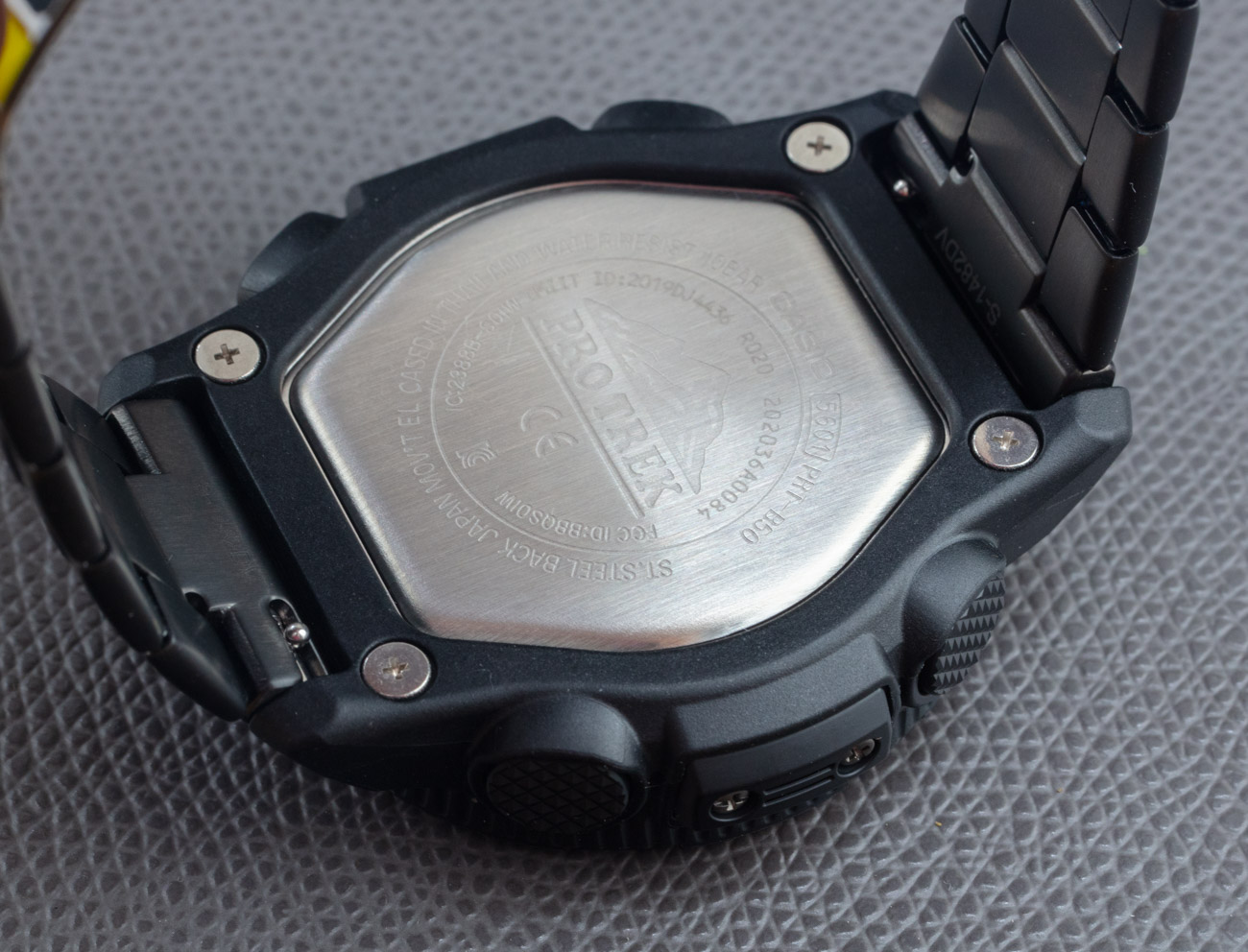
I really like this module for the money because it offers everything people have come to expect with regard to Pro Trek functionality but also some new modern features, such as Bluetooth connectivity. Using the G-Shock app, you can have your phone automatically adjust/update the time and set things on the watch, such as the alarm. “Mobile Link” via Bluetooth is a feature that is coming to more and more Casio watches, and it’s great that it is already being widely rolled out on even more entry-level models. Casio calls the Pro Trek PRT-B50 a “quad sensor” watch because, in addition to the altimeter/barometer, compass, and thermometer of previous-gen Pro Trek watches, the latest sensor is a step counter. Though this is a light form of activity tracking smartwatch, the PRT-B50 can in fact function as a simple semi-smartwatch activity tracker or you can simply use the step counter (pedometer) without any phone connectivity. In that regard, I really admire Casio’s approach with Bluetooth — as of now, on most models, using Bluetooth with your watch is optional and not required for most of the core functionality.
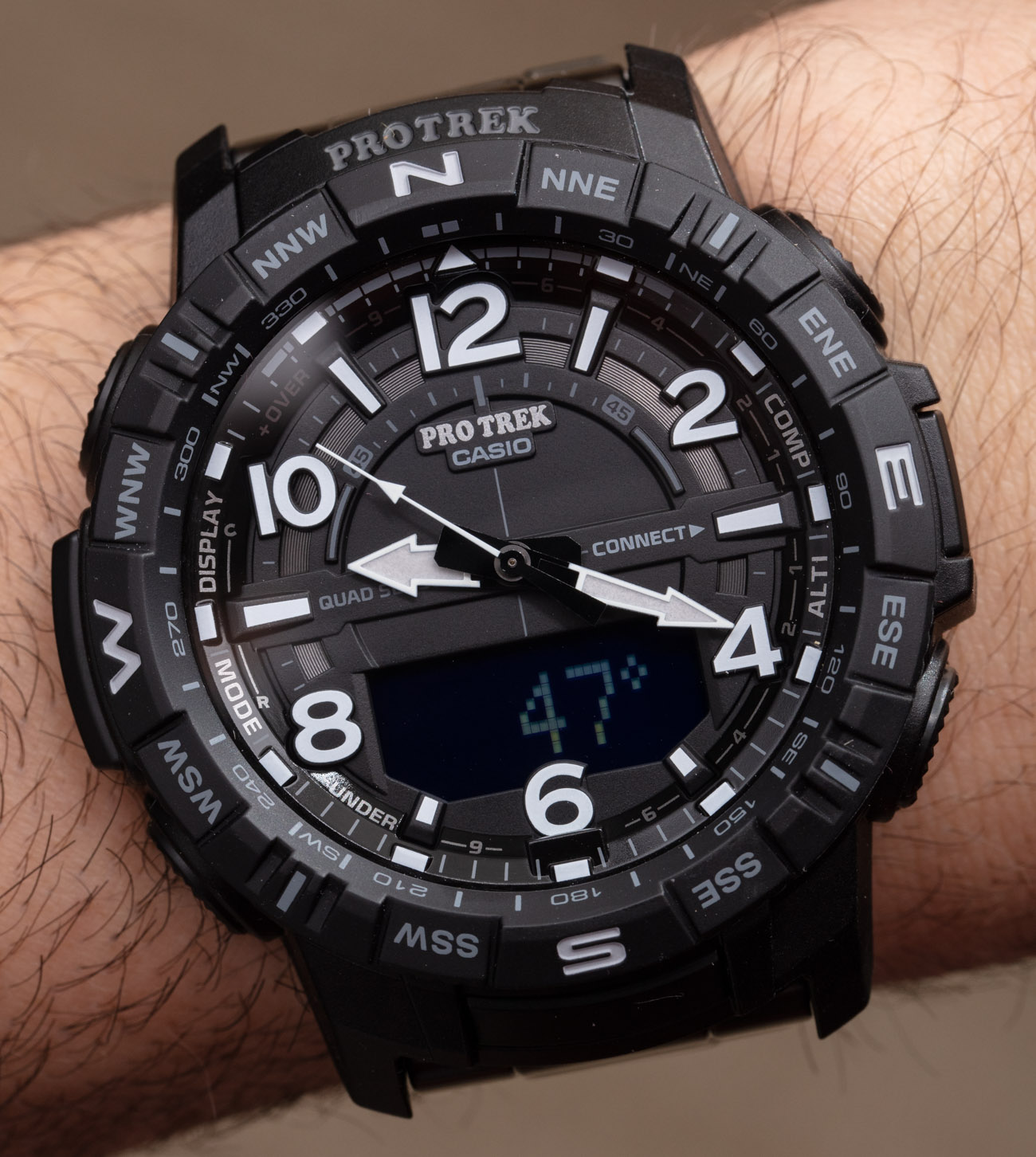
Even though the small negative (what the dark screens are called) LCD display does not take up the bulk of the PRT-B50 dial, it is something that you’ll use a lot. That said, I like how, from a distance, this Pro Trek looks more or less like an entirely analog watch. The default screen can display the time digitally, the calendar, steps, or a barometric pressure graphic (for weather prediction). Dedicated pushers on the case allow you to quickly activate the altimeter and compass functions. These repurpose the seconds hand as an analog indicator such as the compass needle. The system is rather refined and works quite well; it also happens to be quite snappy in its performance.
What draws me to the Pro Trek PRTB50YT-1 is its legible dial, handsome yet conservative style, and its light weight and wearing comfort. I’m still not quite sure how to tell if someone is better off with a Pro Trek versus a G-Shock, but Casio wins either way. It is true that the Pro Trek PRT-B50 is the budget model, assuming you can live without the titanium bracelet (there is a non-black model, as well). With the bracelet, the watch is still a good value given that the bracelet design is both new and not offered in this affordable form in the G-Shock collection. Starting price for the Casio Pro Trek PRT-B50 watch collection is $220 USD and, as featured, the PRTB50YT-1 has a retail price of $380 USD. Learn more at the Casio Pro Trek website here.

